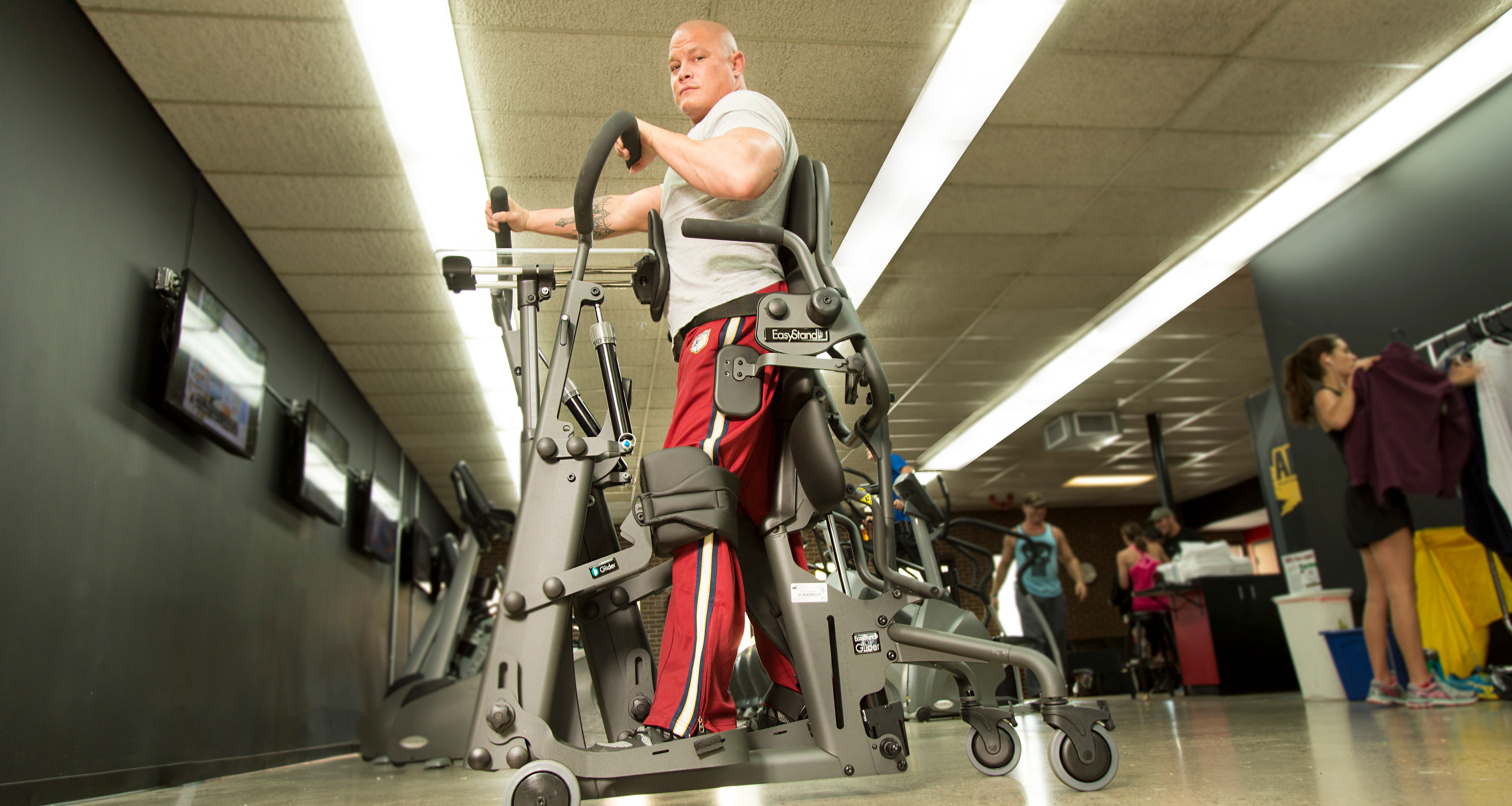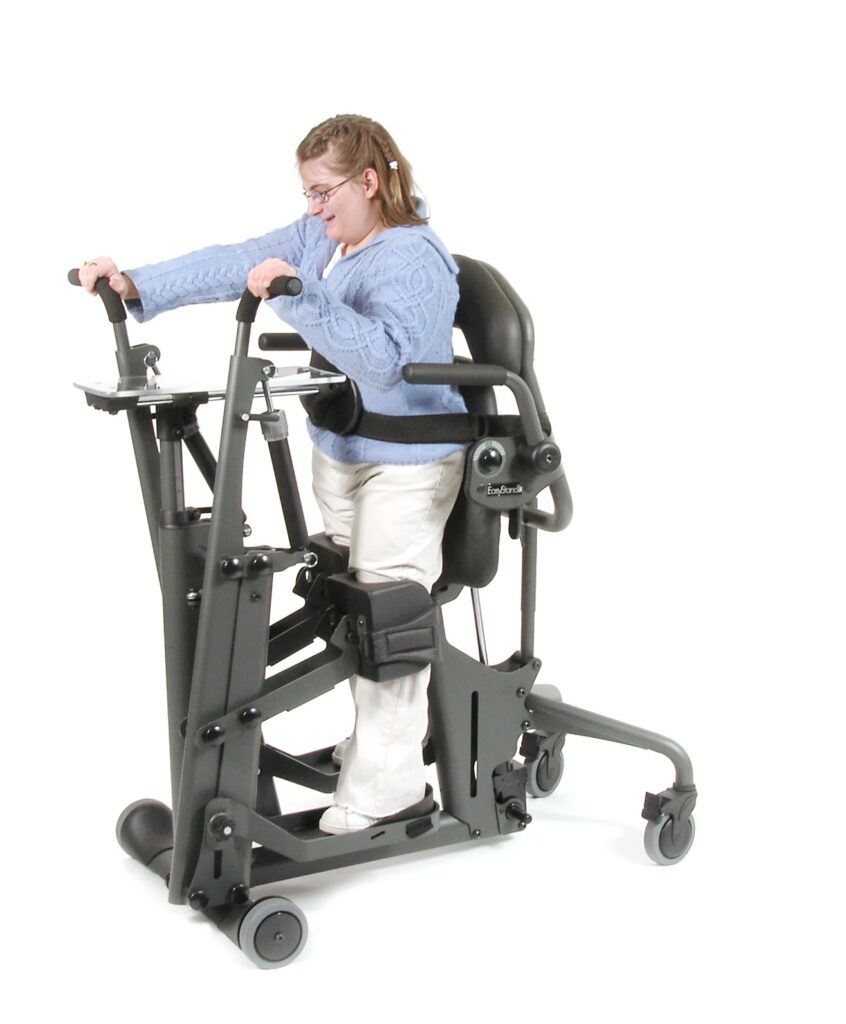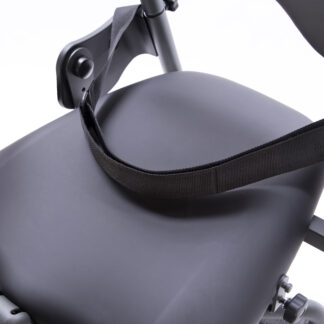
Active Standing and the EasyStand Glider
Active standing for SCI patients enhances the medical benefits of standing and weight-bearing by activating the legs. The Glider provides weight-bearing and range of motion (ROM) within the same standing session and creates a unique therapeutic opportunity. Secondarily some individuals may realize improvements in cardiovascular and respiratory function.
The Glider was designed as a single piece of equipment that could provide therapeutic intervention for range of motion, weight-bearing and cardiovascular health. The Glider facilitates motion in the lower extremities, similar to cross country skiing, so that individuals continue to bear weight through the long bones of their legs while safely allowing range of motion in the hips and ankles. This provides a therapeutic opportunity found in no other standing device and may provide the medical benefits of traditional, static weight-bearing but with increased range of motion, increased circulation and cardiovascular conditioning.
The first time that I turned the corner in the gym and saw it, I was like ‘oh, what’s that?’ And from that point on, I started using it as part of my daily routine.
– SONNY KAESBAUER ON HIS FIRST TIME SEEING THE EASYSTAND GLIDER
Range of Motion and Spasticity
Spasticity is a side effect of paralysis that varies from mild muscle stiffness to severe, uncontrollable leg movements. Spasticity is not always bad though, muscles are activated through spasticity and can help maintain some muscle tone, but unmanaged it can interfere with activities of daily living (ADLs).
Range of Motion (ROM) is the measure of movement around a specific joint, muscle or other body parts. There are three types of ROM: Passive, Active-Assistive and Active ROM. These intervention methods may help rebuild strength and range of motion without doing further damage and can be a way of managing spasticity.

Passive ROM: In passive range of motion exercises, the patient does not perform any movement themselves; instead, the therapist moves the muscles and joints through their full range of motion.
Active-Assistive ROM: When a person with physical limitations moves a joint through its range of motion with some manual assistance from a therapist or caregiver with the aid from a strap, band or other technology. Initially, the patient may suffer a great deal of pain and weakness when performing these exercises. However, with time, gradual and lasting improvement in the affected muscles and joints is often realized.
Active ROM: This is when the person with physical limitations is able to independently take a joint through complete ROM with only verbal cues or with technology.
The EasyStand Glider enables Active ROM – or active standing – by using the glide handles which creates a reciprocal movement, flexion and extension (ROM), in the hips and ankles all while being fully supported in a standing position. The body’s skeleton and support from the standing frame in the bottom and back of the foot, the knee pads and padded straps, the posterior of the body through the seat and back, anterior support from the tray pad and lateral stability through hip guides or lateral trunk supports, provide a platform that can work for those who need minimal support to those with high-level spinal cord injuries or other neuro-muscular issues that cause very low or no tone. Standing does require the body (musculoskeletal system) to withstand one’s body weight and associated stress. So, it is recommended to consult with a primary physician or physical therapist prior to starting a standing program.


How does it work?
Request a Free Product Demonstration Today!
We recommend a product demonstration/trial prior to purchase which helps ensure the correct product, size and support/positioning components are selected. Fill out our contact form by clicking the button below today. Trials are typically done in conjunction and at the location of a local dealer or clinic.




